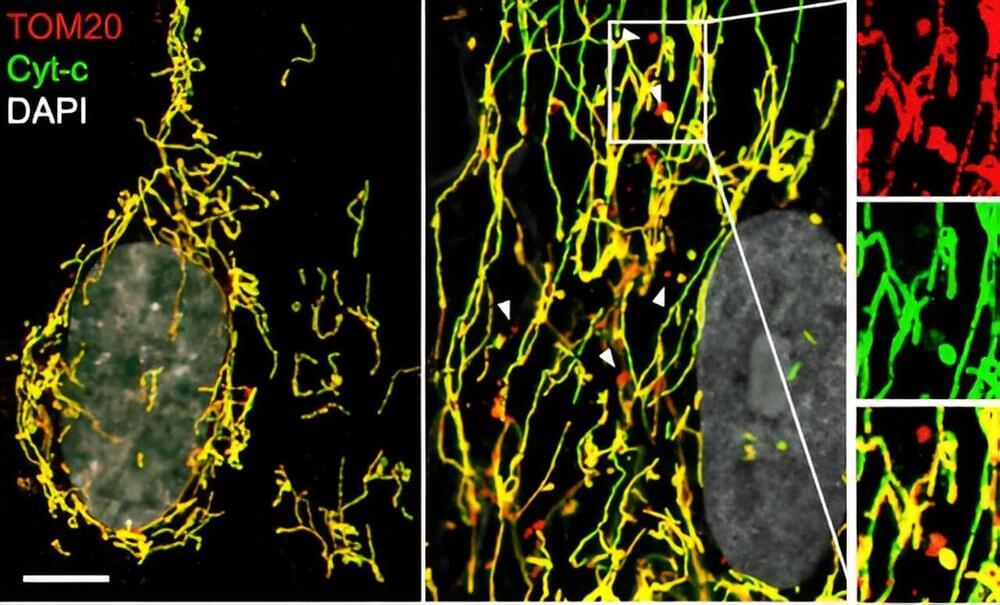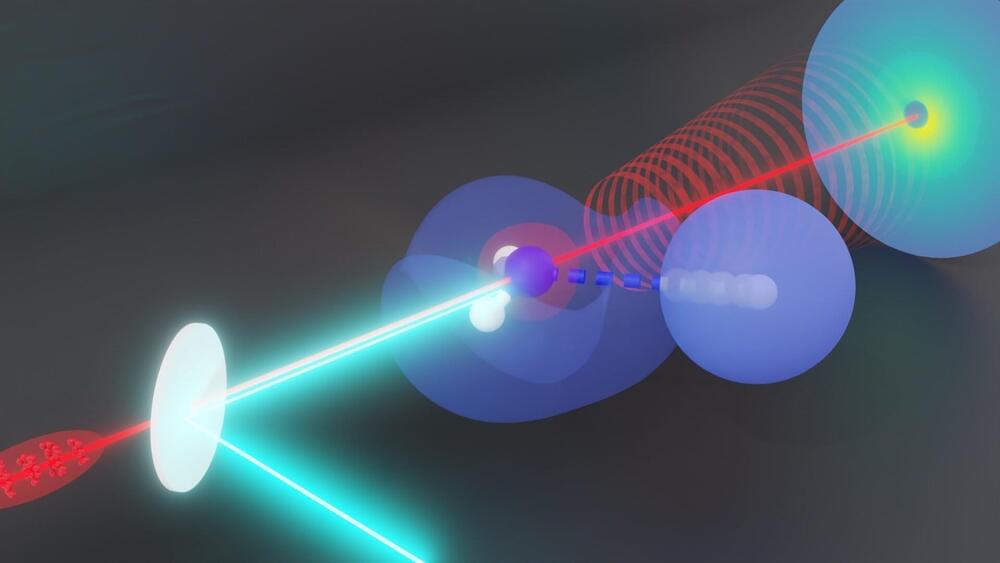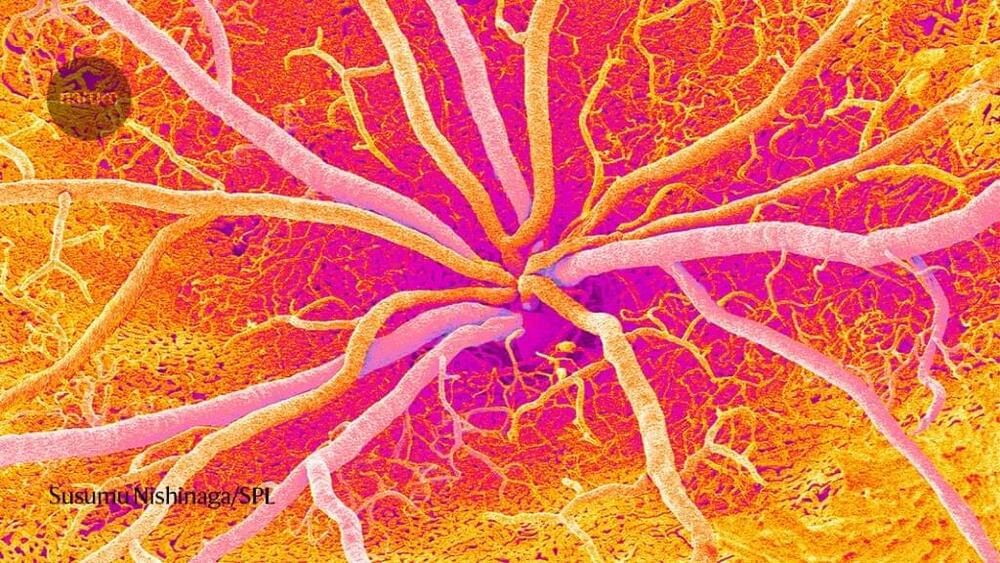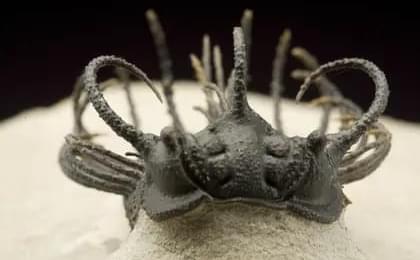How we grow old gracefully—and whether we can do anything to slow down the process—has long been a fascination of humanity. However, despite continued research the answer to how we can successfully combat aging still remains elusive.



Arithmetic, rooted in our biological perception, is a natural consequence of how we perceive and organize the world around us. This connection between perception and mathematical truths suggests that mathematics is both a uniquely human invention and a universal discovery, highlighting a profound unity between the mind and the physical universe…

Some of nature’s mysteries have kept scientists busy for decades—for example, the processes that drive evolution. The question of whether certain differences between and within species are caused by natural selection or by chance processes divides evolutionary biologists even today. Now, an international team of researchers has teased apart a scientific debate concerning the evolutionary theories of Darwin and the Japanese geneticist Kimura. Their conclusion: the debate is unnecessarily convoluted by the co-existence of different interpretations.
Due to his contributions to geological and biological sciences, British naturalist Charles Darwin (1809–1882) is considered one of the most important natural scientists. His influential work “On the Origin of Species” (1859), with its strictly scientific explanation of the diversity of life, forms the basis of modern evolutionary biology. Darwin concluded that species evolve through natural selection: well-adapted organisms survive, others don’t.
However, by the end of the 1960s, the Japanese geneticist Motoo Kimura (1924–1994) proposed that at the genetic level, most changes in the course of evolution do not offer direct advantages or disadvantages to the individual but are simply neutral. According to his “Neutral Theory of Molecular Evolution,” first published in 1968, most of the genetic variation within and between species arises from random fluctuations of neutral mutations.


Scientists have caught fast-moving hydrogen atoms—the keys to countless biological and chemical reactions—in action.
A team led by researchers at the Department of Energy’s SLAC National Accelerator Laboratory and Stanford University used ultrafast electron diffraction (UED) to record the motion of hydrogen atoms within ammonia molecules. Others had theorized they could track hydrogen atoms with electron diffraction, but until now nobody had done the experiment successfully.
The results, published in Physical Review Letters, leverage the strengths of high-energy Megaelectronvolt (MeV) electrons for studying hydrogen atoms and proton transfers, in which the singular proton that makes up the nucleus of a hydrogen atom moves from one molecule to another.
This video discusses what it would mean to live forever or to have a greatly expanded lifespan. Would we inevitably grow bored with existence? Why do we even want to live longer?
We also discuss the philosophy of the Ship of Theseus as it applies to mind upload or body transfer. If you transfer your mind to a new body, are you still the same person? We conclude that the answer is yes if and only if you experience no discontinuities in consciousness.
Finally, we discuss a few different ways that new bodies might be formed as technology advances. Digital avatars and robotic bodies are just a few of the possibilities.
Can You Upload Your Mind & Live Forever?
Digital immortality: would you upload your mind to a computer?
https://www.dazeddigital.com/life-culture/article/60341/1/mi…-elon-musk.
Uploading your consciousness will never work, a neuroscientist explains.
In September 2020 we sat down with Robert Sapolsky, Stanford professor and the author of Human Behavioral Biology lectures (https://youtu.be/NNnIGh9g6fA) to discuss if it’s possible for our society to reconcile our understanding of justice with scientific understanding of human behaviour.
Why do humans, most likely, have no free will? How does that link to depression and other psychiatric disorders? Can people accept the idea that there is no free will and start using, what science tells us about the reasons behind our behaviour, as a basis for making sense of justice and morality? If yes, can we even imagine what such society would look like?
This is a third interview with Robert. The first (https://youtu.be/VrQkl7PaA1s) and the second (https://youtu.be/yp9HE5xfojY) talks are available on our channel.


That looks promising. 90% accuracy isn’t bad. Now the trick is getting there though we have options on our own solar system possibly. You never know until you try. I doubt we’ll find high level life remnants but perhaps something much less like at most insect level but more likely microbial. I’m just guessing of course.
A team of scientists supported in part by NASA have outlined a simple and reliable method to search for signs of past or present life on other worlds that employs machine learning techniques. The results show that the method can distinguish both modern and ancient biosignatures with an accuracy of 90 percent.
The method is able to detect whether or not a sample contains materials that were tied to biological activity. What the research team refers to as a “routine analytical method” could be performed with instruments on missions including spacecraft, landers, and rovers, even before samples are returned to Earth. In addition, the method could be used to shed light on the history of ancient rocks on our own planet.
The team used molecular analyses of 134 samples containing carbon from abiotic and biotic sources to train their software to predict a new sample’s origin. Using pyrolysis gas chromatography, the method can detect subtle differences in a sample’s molecular patterns and determine whether or not a sample is biotic in origin. When testing the method, samples originating from a wide variety of biotic sources were identified, including things like shells, human hair, and cells preserved in fine-grained rock. The method was even able to identify remnants of life that have been altered by geological processes, such as coal and amber.
Tina Woods, serving as Healthy Longevity Champion for the National Innovation Center for Aging, sets forth her vision for a blueprint for healthy longevity for all. Her emphasis is on reaping the “longevity dividend” and achieving five additional years of healthy life expectancy while reducing health and wellbeing inequality. Woods elaborates on the role of emerging technologies like AI, machine learning, and advanced data analysis in comprehending and influencing biological systems related to aging. She also underscores the crucial role of lifestyle changes and the consideration of socio-economic factors in increasing lifespan. The talk also explores the burgeoning field of emotion AI and its application in developing environments for better health outcomes, with a mention of “Longevity Cities,” starting with a trial in Newcastle. In closing, Woods mentions the development of a framework for incentivizing businesses through measurement of their contribution to health in three areas: workforce health, consumer health through products and services, and community health. Woods envisions a future where businesses impacting health negatively are disincentivized, and concludes with the hope that the UK’s healthy longevity innovation mission can harness longevity science and data innovation to improve life expectancy.
00:00:00 — Introduction, National Innovation Center for Aging.
00:00:56 — Discussion on stagnating life expectancy and UK’s life sciences vision.
00:03:50 — Technological breakthroughs (including AI) in analyzing biological systems.
00:06:22 — Understanding what maintains health & wellbeing.
00:08:30 — Hype, hope, important of purpose.
00:10:00 — Psychological aging and “brain capital.“
00:13:15 — Ageism — a barrier to progress in the field of aging.
00:15:46 — Health data, AI and wearables.
00:18:44 — Prevention is key, Health is an asset to invest in.
00:19:13 — Longevity Cities.
00:21:19 — Business for Health and industry incentives.
00:23:13 — Closing.
About the Speaker:
Tina Woods is a social entrepreneur and system architect with a focus on health innovation at the intersection of science, technology, policy, and investment. She is the Founder and CEO of Collider Health and Business for Health, driving systemic change for better health through these platforms. She contributes to key UK health strategies and initiatives, like UKRI’s Healthy Ageing Industrial Strategy, and served as the Healthy Longevity Champion for the National Innovation Centre for Ageing. Woods has made significant contributions to AI in health and care, co-leading the Quantum Healthy Longevity Innovation Mission and authoring the book, “Live Longer with AI.” Previously, she served as the director of the All Party Parliamentary Group for Longevity secretariat. Woods is also the CEO & Founder of Collider Science, a social enterprise that encourages young people’s interest in science and technology. She holds a degree in genetics from Cornell University and an MBA from Bayes Business School in London.
FOLLOW US
▀▀▀▀▀▀▀▀▀▀▀▀▀▀▀▀▀▀▀▀▀▀▀▀▀▀
https://www.lifespan.io.
https://www.facebook.com/lifespanio.
https://www.instagram.com/lifespan.io/
HOW CAN YOU SUPPORT US?
▀▀▀▀▀▀▀▀▀▀▀▀▀▀▀▀▀▀▀▀▀▀▀▀▀▀
Lifespan.io, a 501©(3) nonprofit organization.
► Support us with monthly donations by becoming a Lifespan Hero: https://www.lifespan.io/hero.
► Subscribe: https://www.youtube.com/user/LifespanIO
► Learn more, and help us: https://www.lifespan.io.
#Longevity #AI #Health #EARD